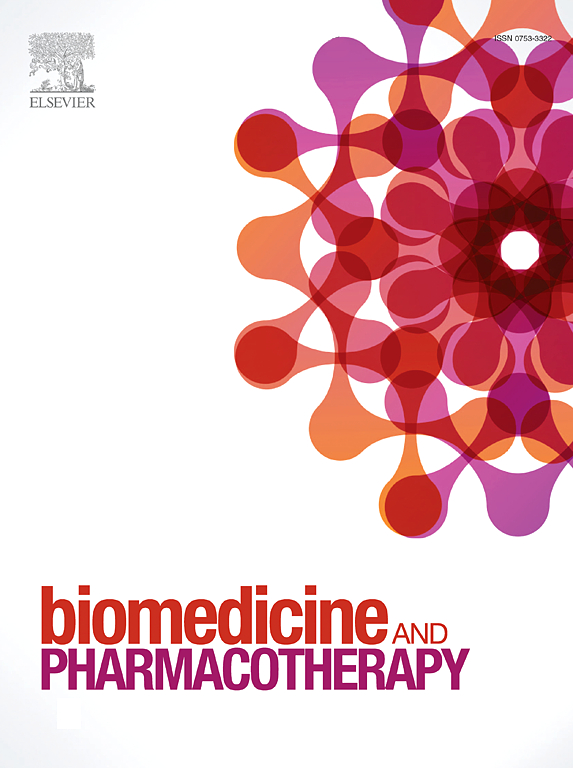Parietin from lichen: extraction, characterization, and in silico, in vitro, and in vivo evaluation of its protective effects against inflammation, oxidative stress, and neutrophil infiltration in diabetic rat tissues
IF 6.9
2区 医学
Q1 MEDICINE, RESEARCH & EXPERIMENTAL
引用次数: 0
Abstract
Lichen-derived Phenolic parietin (PNT) demonstrates promising anti-inflammatory and antioxidant properties with potential applications as a therapeutic agent. This study investigates, for the first time, the protective effects of PNT against obesity-induced inflammation, type 2 diabetes, oxidative stress, and tissues damages. In vitro and in silico analyses revealed strong interactions of PNT with key enzymes such as lipase, α-amylase, myeloperoxidase (MPO), phospholipase A2 (PLA2), 5-lipoxygenase (5-LO), and elastase (ELA), supported by favorable binding energies and low IC50 values. In obese rats, PNT at a dose of 100 mg/kg bw significantly reduced α-amylase and lipase activities, leading to a 19 % decrease in body weight, a 42 % reduction in blood glucose levels, and a 112 % increase in liver glycogen content, as well as oral glucose tolerance test (OGTT). Furthermore, this pigment prevents the dysregulation of high-density lipoprotein cholesterol (HDL-C), low-density lipoprotein cholesterol (LDL-C), total cholesterol (TC), and total lipids (TL) levels in tissues and serum. PNT also suppressed immune cell infiltrationin the pancreas evidenced by histological analysis and reductions in MPO activity (and inflammatory enzyme activity (PLA2, 5-LO, and ELA). Additionally, PNT reduced stress oxidant level, as shown by decreased hydrogen peroxide (H2O2), thiobarbituric acid reactive substances (TBARS), and total oxidant status (TOS), while enhancing total antioxidant status (TAS). Histological analysis confirmed reduced necrosis and neutrophil infiltration in the pancreas, of PNT-treated rats. These findings highlight the potent anti-inflammatory and antioxidant properties of PNT, offering therapeutic potential for mitigating tissue damage and improving organ function in obesity and type 2 diabetes.
地衣提取物:提取、表征、硅、体外和体内对糖尿病大鼠组织中炎症、氧化应激和中性粒细胞浸润的保护作用的评价
地衣衍生的酚醛parietin (PNT)具有良好的抗炎和抗氧化特性,具有潜在的治疗剂应用前景。本研究首次探讨了PNT对肥胖引起的炎症、2型糖尿病、氧化应激和组织损伤的保护作用。体外和计算机分析显示,PNT与脂肪酶、α-淀粉酶、髓过氧化物酶(MPO)、磷脂酶A2 (PLA2)、5-脂氧合酶(5-LO)和弹性酶(ELA)等关键酶具有较强的相互作用,具有良好的结合能和较低的IC50值。在肥胖大鼠中,100 mg/kg bw剂量的PNT显著降低α-淀粉酶和脂肪酶活性,导致体重下降19 %,血糖水平下降42 %,肝糖原含量增加112 %,以及口服葡萄糖耐量试验(OGTT)。此外,这种色素可以防止组织和血清中高密度脂蛋白胆固醇(HDL-C)、低密度脂蛋白胆固醇(LDL-C)、总胆固醇(TC)和总脂质(TL)水平的失调。组织学分析和MPO活性(和炎症酶活性(PLA2、5-LO和ELA)的降低证实了PNT也抑制了胰腺中的免疫细胞浸润。此外,PNT还能降低应激氧化水平,如过氧化氢(H2O2)、硫代巴比妥酸活性物质(TBARS)和总氧化状态(TOS),同时提高总抗氧化状态(TAS)。组织学分析证实pnt治疗大鼠胰腺坏死和中性粒细胞浸润减少。这些发现强调了PNT有效的抗炎和抗氧化特性,为减轻肥胖和2型糖尿病的组织损伤和改善器官功能提供了治疗潜力。
本文章由计算机程序翻译,如有差异,请以英文原文为准。
求助全文
约1分钟内获得全文
求助全文
来源期刊
CiteScore
11.90
自引率
2.70%
发文量
1621
审稿时长
48 days
期刊介绍:
Biomedicine & Pharmacotherapy stands as a multidisciplinary journal, presenting a spectrum of original research reports, reviews, and communications in the realms of clinical and basic medicine, as well as pharmacology. The journal spans various fields, including Cancer, Nutriceutics, Neurodegenerative, Cardiac, and Infectious Diseases.

 求助内容:
求助内容: 应助结果提醒方式:
应助结果提醒方式:


